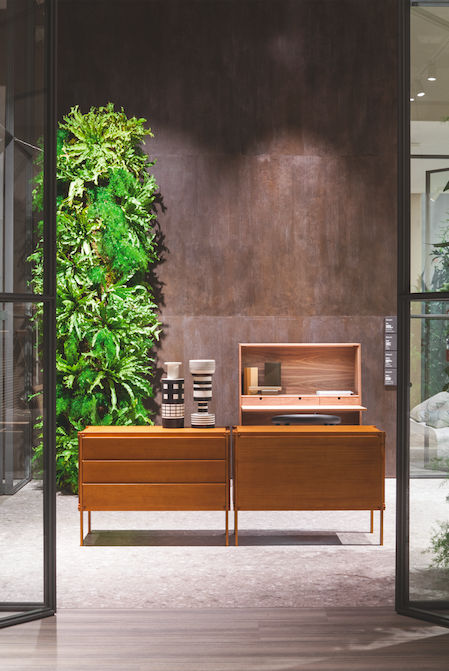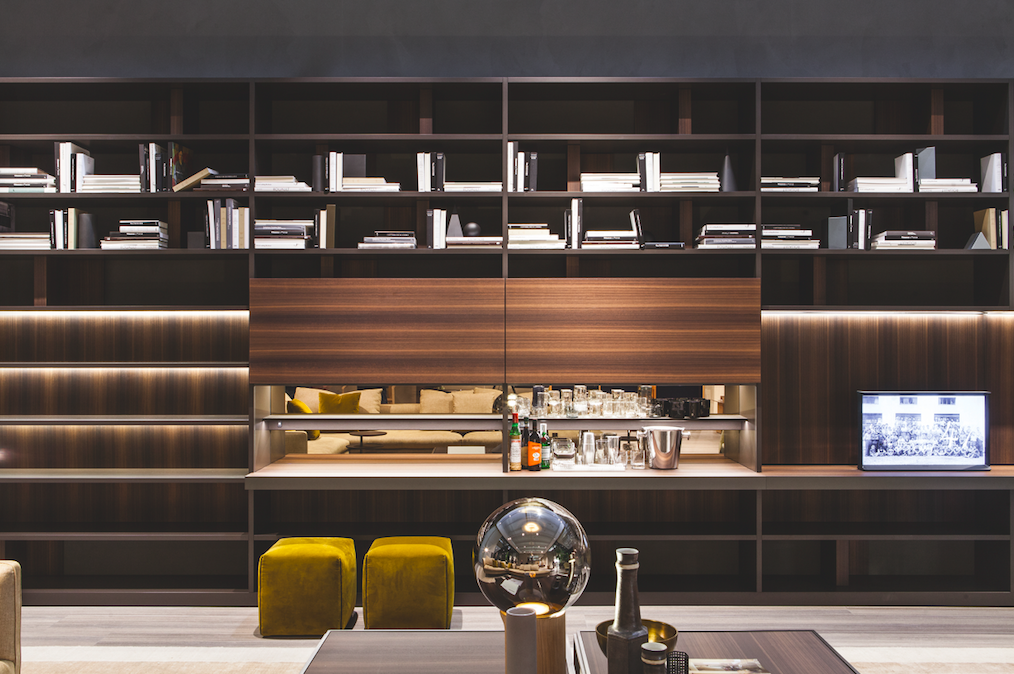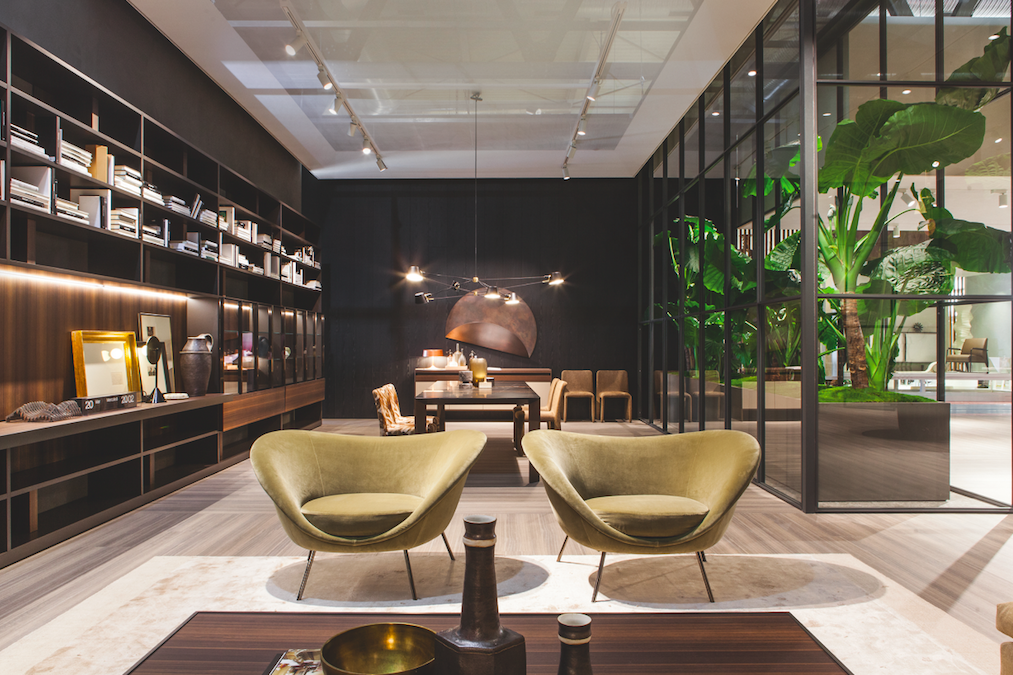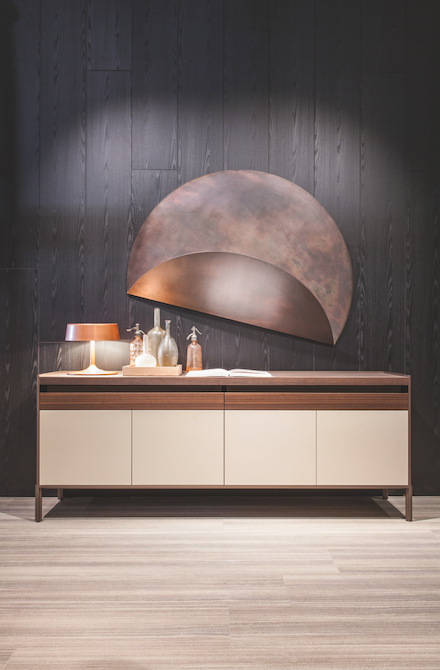Whitewall spoke with Giulia Molteni, the communications and marketing director of Molteni&C, about the brand’s 80th anniversary, the Molteni Museum, and the latest design trends.
WHITEWALL: Molteni&C is now past its 80th anniversary, which you celebrated with an exhibition at the Villa Reale. Could you tell me about what the Molteni family represents in Italian culture?

Courtesy of Molteni&C
GIULIA MOLTENI: Family is the core of Italian culture, and I think that whatever we call a home, it is always very linked to your values and your personal situation. Last year we celebrated our 80th anniversary with a big exhibition by Jasper Morrison at Villa Reale in Milan, and following the project in November we opened our Molteni Museum, which represents the history of the brand from 1934 to today. We’ve acquired different companies starting from small artisan laboratories of Molteni, then the kitchen brand Dada, and then the office brands UniFor and Citterio. So for us in the third generation it was very important to know very well the history of the company to better understand what would be the future, because it’s very important to look in the past to think about what is next.
WW: What are the challenges and rewards of running an enterprise that carries 80 years of history and tradition in 2016?

Courtesy of Molteni&C
GM: The challenges are to keep going and to never stop looking to the next innovation, the next upcoming designer, and I think it’s an exercise to look back and keep it in the tradition. This is the reason we launched the Heritage Collection this year, with the re-edition of “miss armchair” by Tobias Scarpa originally from 1986; MHC 1, a chest of drawes by Werner Blaser 1955; and MHC 2, a bookcase by Yasuhiko Itoh 1059.
WW: We have noticed that some brands nowadays pick younger generations of designers who are less about the name and more about innovation. It seems that it’s working well?

Courtesy of Molteni&C
GM: It’s true. This combination is definitely very important with research and development in the company. We have 30 people working every day to discover new materials, technologies, and production processes. That is the real secret of Italian design.
WW: Since its foundation, Molteni has dramatically expanded with the acquisition of UniFor and Citterio in 1969, and Dada in 1979. Is there something additional to home, kitchen, and office furniture that the enterprise is interested in developing in the future?

Courtesy of Molteni&C
GM: Yes, definitely we’re keeping our eyes open. Now we’re also selling an entire concept of a living house; we started a carpet collection, in order to complete the living room, designed by Patricia Urquiola.
We’re also collaborating a lot now in the art industry. We’re donating to the new Design Museum in London two pieces to support the Phillips auctions called “Time for Design.” We donate one unique piece by Aldo Rossi and a golden version of Norman Foster’s Arc table signed by him. I think art and design are more and more linked together. This project with Phillips is something we never did in the past. It’s a new experience.
WW: Who have been the most important designers collaborating with Molteni&C according to you, and why?
GM: We have had very important architectural collaborations with Foster + Partners and Jean Nouvel, but also others linked more to the Italian tradition, like with Tobia Scarpa, Aldo Rossi, Luca Meda in the past and now Vincent Van Duysen and Rodolfo Dordoni.
WW: Apart from Italy, which countries appeal to you in terms of design and architecture?
GM: Japan, for sure. Tokyo is my favorite city. We actually have a very important store there that we will enlarge in autumn. I’m very inspired by the culture of the Japanese that is very close to Italian mentality, I think. But travel in general is always very important for all of us, to see new trends and new inspirations.
WW: You are an expert in the evolution of trends in interior design from the thirties through the sixties onward. How would you describe the current trends?
GM: It is definitely the end of minimalism. It’s much more about about mixing styles rather than just the monotone design, and for this reason we launched the Gio Ponti Collection, and then we opened up to different re-editions mixed with very modern pieces and important designers.
This article is published in Whitewall‘s summer 2016 Design issue.








